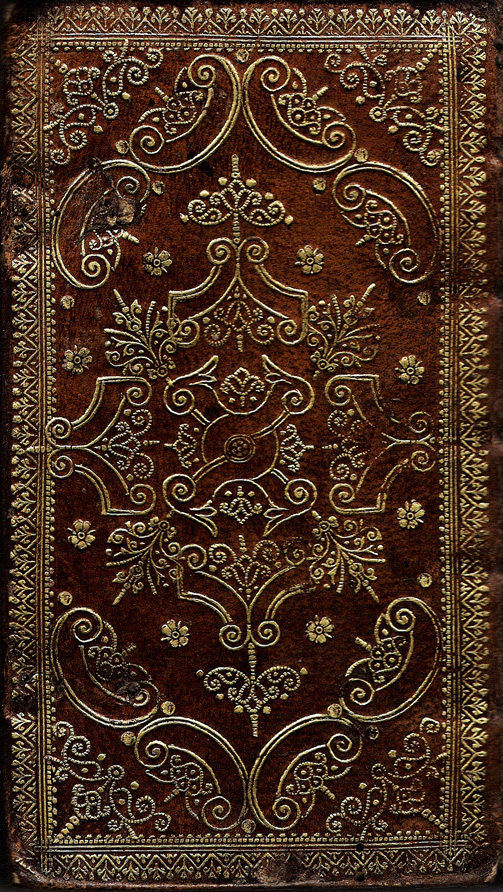

| On a number of occasions, while looking for bindings with decorative pointillé tooling, similar to that of the Atelier des Caumartin, I stumbled upon a small group of bindings that were indeed very similar. In auction catalogues these bindings are now often referred to as "reliure de l'atelier de Charenton." (see the example below) and are often found on copies of Marot's Pseaumes de David.. Below we will explore* some of the history of this publication before looking more closely at the bindings |

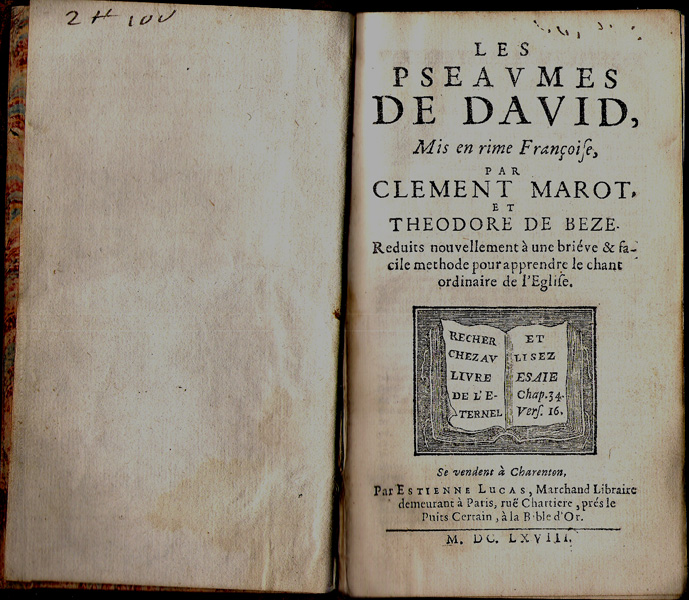
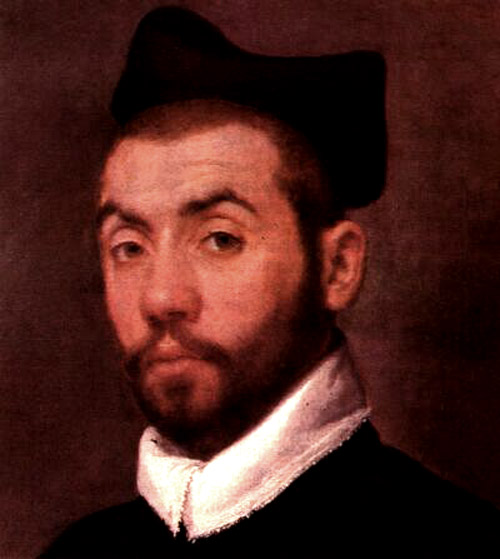
|
The famous XVItth century French poet put into verse the biblical Psalms that were to be sung all over France and become the well-known Huguenot Psalter. Clément Marot was born in Cahors in 1496. He was taught poetry and rhetoric by his father who was himself a poet. He entered the service of Lord de Villeroy and later, that of Marguerite d'AngoulÉme, François 1st's sister and future queen of Navarre. He replaced his father in the service of François 1st and frequented evangelical and humanistic circles. His keen interest in the Reformation and his freedom of thought caused him considerable trouble. In 1529, he was charged with heresy and sent to prison. At the request of François 1st he was set free and became the official poet at the king's court. He was troubled again in 1532 and in 1534, after the "posters' incident", he took refuge, first in Nierac, with Marguerite d'Angoulême and then in Ferrara, with Renée de France, Louis XII's daughter. He abjured Protestantism in 1536 and was forgiven by the king. He went back to Paris in 1537 and once more became the official poet of the court. He was accused of heresy once more when one of his works, "l'Enfer" was reprinted in 1542. He took refuge with Calvin in Geneva. He died in Turin in 1544. |

|
The versification of the Psalms Clement Marot probably began to versify (or paraphrase) the psalms around 1531, in order to replace the "worldly and coarse songs" ("les chansons mondaines et sales") by the singing of the Psalms. He was doubtlessly influenced by Marguerite de Navarre and her leanings towards humanism and the Reformation. He put the psalms into verse and rhymes so that they could be easily memorised. He organised them into stanzas so that they could be sung. In 1539, he offered François 1st the manuscript of the first thirty Psalms. They were set to music by using famous or secular tunes. They were tremendously successful, both at the court and all over France. In 1542, he took refuge in Geneva with Calvin who encouraged him to resume the versification of the Psalms. When he died in 1544, he had versified 49 Psalms. Calvin gave Theodore de Bèze the responsibility of continuing Marot's work and completing the versification of the 150 Psalms of the Bible. Calvin asked several songsters from Geneva to compose or adapt tunes that were suitable for the singing of psalms in church. In 1562, an official collection of the 150 Psalms came out entitled 'The Psalms of David'. This psalm book had a very large circulation and contributed to shape the Reformed identity. Some Psalms became passwords and even war songs as the French Protestant people went through difficult times. |
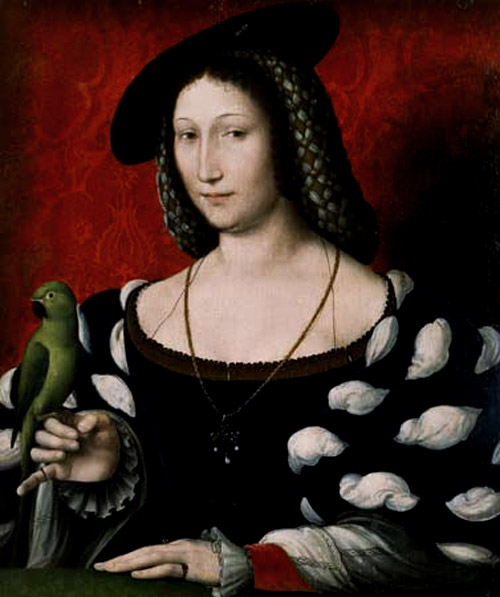
|
The St. Bartholomew's Day massacre (Massacre de la Saint-Barthélemy in French) was a wave of Catholic mob violence against the Huguenots (French Calvinist Protestants), during the French Wars of Religion. Traditionally believed to have been instigated by Catherine de' Medici, the mother of King Charles IX, the massacre took place six days after the wedding of the king's sister to the Protestant Henry of Navarre. This was an occasion for which many of the most wealthy and prominent Huguenots had gathered in largely Catholic Paris. Events began two days after the attempted assassination of Admiral Gaspard de Coligny, a Huguenot military leader. Starting on 24 August 1572 (the feast of Bartholomew the Apostle) with the murder of Coligny, the massacres spread throughout Paris, and later to other cities and the countryside, lasting for several months. The exact number of fatalities is not known, but it is estimated that anywhere from ten thousand to possibly one-hundred thousand Huguenots died in the violence throughout France. Though by no means unique, "it was the worst of the century's religious massacres." The massacres marked a turning-point in the French Wars of Religion. The Huguenot political movement was crippled by the loss of many of its prominent aristocratic leaders, and those who remained were increasingly radicalized. |
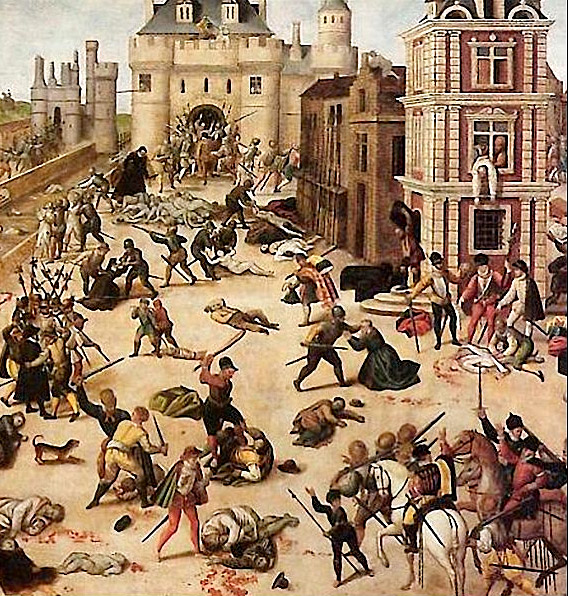
|
Edict of Nantes The Edict of Nantes was issued on April 13, 1598 by Henry IV of France to grant the Calvinist Protestants of France (also known as Huguenots) substantial rights in a nation still considered essentially Catholic. The main concern was civil unity,[2] and the Edict separated civil from religious unity, treated some Protestants for the first time as more than mere schismatics and heretics, and opened a path for secularism and tolerance. In offering general freedom of conscience to individuals, the edict offered many specific concessions to the Protestants, such as amnesty and the reinstatement of their civil rights, including the right to work in any field or for the State and to bring grievances directly to the king. The Edict aimed primarily to end the long-running, disruptive French Wars of Religion. Henry IV also had personal reasons for supporting the Edict. Prior to assuming the throne in 1589 he had espoused Protestantism, and he remained sympathetic to the Protestant cause: he had converted to Catholicism only in 1593 in order to secure his position as king, allegedly saying "Paris is worth a Mass". The Edict succeeded in restoring peace and internal unity to France, though it pleased neither party: Catholics rejected the apparent recognition of Protestantism as a permanent element in French society and still hoped to enforce religious uniformity, while Protestants aspired to parity with Catholics. "Toleration in France was a royal notion, and the religious settlement was dependent upon the continued support of the crown." |
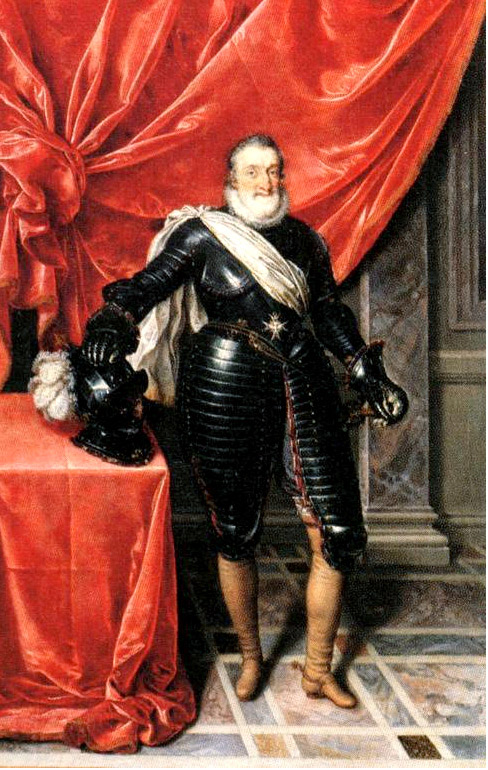
|
Revocation of the Edict of Nantes The Edict remained in unaltered effect, registered by the parlements as "fundamental and irrevocable law", with the exception of the brevets, which had been granted for a period of eight years, and were renewed by Henry in 1606 and in 1611 by Marie de Médecis, who confirmed the Edict within a week of the assassination of Henry, stilling Protestant fears of another St. Bartholomew's Day massacre. The subsidies had been reduced by degrees, as Henry gained more secure control of the nation. By the peace of Montpellier in 1622, concluding a Huguenot revolt in Languedoc, the fortified Protestant towns were reduced to two, La Rochelle and Montauban. The brevets were entirely withdrawn in 1629, by Louis XIII, following the Siege of La Rochelle, in which Cardinal Richelieu blockaded the city for fourteen months. During the remainder of Louis XIII's reign, and especially during the minority of Louis XIV, the implementation of the Edict varied year by year, voiced in declarations and orders, and in case decisions in the Council, fluctuating according to the tides of domestic politics and the relations of France with powers abroad. In October 1685, Louis XIV, the grandson of Henry IV, renounced the Edict and declared Protestantism illegal with the Edict of Fontainebleau. This act, commonly called the revocation of the Edict of Nantes, had very damaging results for France. While the wars of religion did not re-ignite, many Protestants chose to leave France, most moving to Great Britain, Prussia, the Dutch Republic and Switzerland. This exodus deprived France of many of its most skilled and industrious individuals, who would from now on aid France's rivals in Holland and England. The revocation of the Edict of Nantes also further damaged the perception of Louis XIV abroad, making the Protestant nations bordering France even more hostile to his regime. Upon the revocation of the edict, Frederick Wilhelm issued the Edict of Potsdam, which encouraged Protestants to come to Brandenburg. |
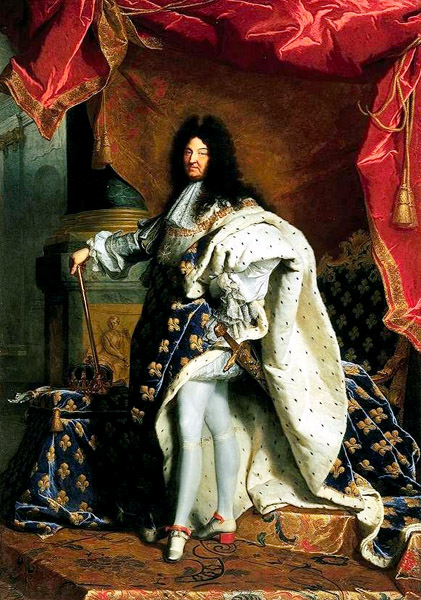
| Thus we can see that owning a copy of Marot's psalms in the 17th century wasn't always something that one might openly admit, in fact by 1685, with the revocation of the Edict of Nantes, Protestants were again risking their lives to carry such a book. In the next few pages I hope to explore more fully the decorative bindings found on copies of Marot's Palms and particularly the Charenton printings. |
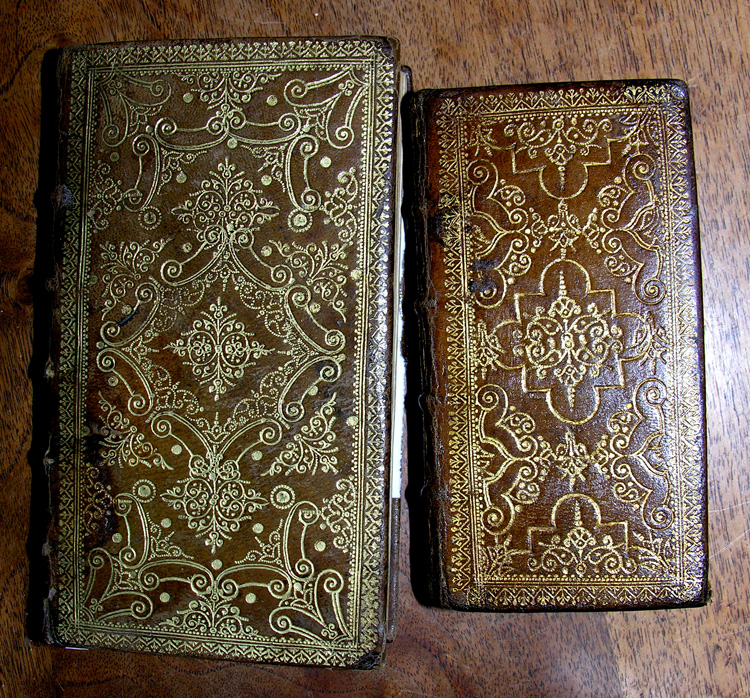
|
Les pseaumes de David mis en rimes françoises par Clément Marot et Théodore de Bèze. Charenton, Estienne Lucas, 1666. The two examples above are from a private collection, the larger is a 1666 Marot Pseaumes, while the smaller is also a Marot Pseaumes, but is missing the title page, both copies are Estienne Lucas publications, Thus we have at least three bindings from which we can extract Charenton tool imprints, and the results are rather surprising. See the next page L'ATELIER DE CHARENTON - Gold tooled imprints |
| Go to Digital Alchemy | Click on this link to visit cyclopaedia.org |